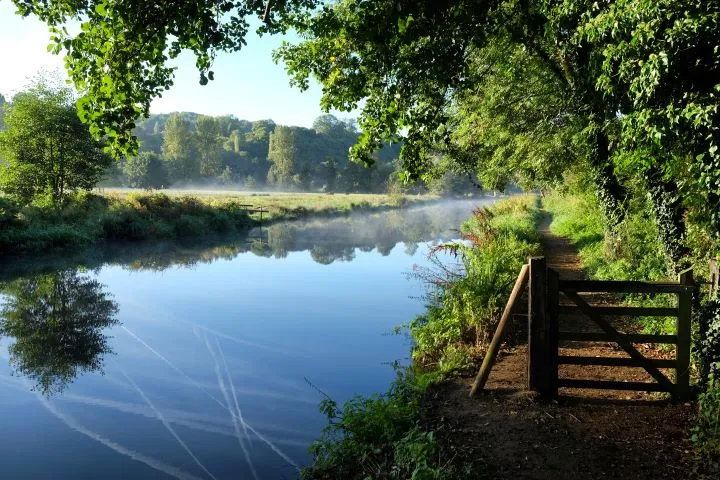
Beneath the Surface: Unraveling the Secrets of River Parameters and A Comprehensive Guide to Measuring River Parameters
Rivers, with their tranquil surfaces and meandering currents, conceal a world of intricacies beneath the surface. The secrets of river parameters, the measurable attributes that define their health and functionality, hold the key to understanding these liquid landscapes. In this comprehensive guide, we embark on a journey to unravel the mysteries beneath the surface, exploring the significance of river parameters and the methodologies involved in their measurement.
Understanding River Parameters: The Foundations of Water Quality
River parameters encompass a range of physical, chemical, and biological attributes that collectively define the condition of river ecosystems. These parameters serve as indicators of water quality, offering insights into the health and vitality of rivers. From temperature and dissolved oxygen levels to nutrient concentrations and biodiversity, each parameter provides a piece of the puzzle that forms the holistic picture of a river’s well-being.
1. Physical Parameters: Temperature, Turbidity, and Flow
Physical parameters offer insights into the dynamic nature of river systems. Temperature influences the metabolic rates of aquatic organisms and affects the solubility of gases in water. Turbidity, a measure of water clarity, indicates the presence of suspended particles, influencing light penetration and aquatic habitats. Flow, representing the movement and velocity of water, is crucial for shaping river landscapes and supporting diverse ecosystems.
2. Chemical Parameters: Dissolved Oxygen, Nutrients, and pH
Chemical parameters play a vital role in determining water quality. Dissolved oxygen levels are crucial for the survival of aquatic life, and variations can indicate pollution or environmental stress. Nutrient concentrations, including nitrogen and phosphorus, influence ecosystem productivity but can lead to issues like algal blooms when excessive. pH levels, representing the acidity or alkalinity of water, affect the solubility of minerals and impact aquatic organisms.
3. Biological Parameters: Biodiversity and Aquatic Life
Biological parameters provide a direct reflection of river health. Biodiversity, encompassing the variety of species present, is a key indicator of ecosystem resilience. The presence of diverse aquatic life, including fish, insects, and microorganisms, contributes to the overall functioning of river ecosystems. Monitoring changes in biological parameters helps assess the impact of environmental stressors on aquatic habitats.
A Comprehensive Guide to Measuring River Parameters
Accurate measurement of river parameters is fundamental to understanding and managing water quality. A systematic approach involving advanced technologies, field measurements, and laboratory analyses is essential for gathering reliable data. Here is a comprehensive guide to measuring river parameters:
1. Field Measurements: On-site Data Collection
Field measurements involve collecting data directly from the river environment. Instruments such as multiparameter probes can assess temperature, dissolved oxygen, pH, and conductivity in real-time. Sampling equipment, such as secchi disks for turbidity measurement, allows for on-site assessments. Field measurements provide immediate insights into the current conditions of a river and are valuable for identifying trends and patterns.
2. Water Sampling: Bringing the River to the Laboratory
Water sampling involves collecting water samples at specific locations and depths for detailed laboratory analysis. Samples are typically analyzed for chemical parameters such as nutrient concentrations, heavy metals, and contaminants. Laboratory analysis provides accurate and quantitative data, allowing for in-depth assessments of water quality. Standardized sampling protocols ensure consistency and comparability of results.
3. Remote Sensing Technologies: Aerial Insights
Advancements in remote sensing technologies have transformed our ability to monitor large-scale river systems. Satellite imagery and aerial surveys can provide valuable information on water quality parameters, including turbidity and algal blooms. These technologies offer a broader perspective, enabling the monitoring of extensive river networks and identifying trends over time.
4. Citizen Science: Engaging Communities in Monitoring
Citizen science initiatives empower communities to actively participate in monitoring river parameters. Training programs and accessible measurement tools allow citizens to contribute valuable data to scientific research. Engaging local communities enhances the spatial coverage of monitoring efforts and fosters a sense of environmental stewardship.
5. Continuous Monitoring Stations: Real-time Data Streams
Installing continuous monitoring stations along rivers provides real-time data streams for key parameters. These stations use automated sensors to collect data at regular intervals, offering insights into temporal variations. Continuous monitoring is particularly valuable for understanding diurnal and seasonal patterns and detecting sudden changes in water quality.
Advantages of Measuring River Parameters
The measurement of river parameters goes beyond scientific curiosity; it is a critical tool for informed decision-making and effective water resource management. The advantages of measuring river parameters include:
1. Early Detection of Pollution Events
Regular monitoring allows for the early detection of pollution events. Sudden changes in parameters such as dissolved oxygen or nutrient concentrations can signal the presence of pollutants. Timely identification enables prompt responses to mitigate environmental damage and protect aquatic ecosystems.
2. Identification of Pollution Sources
Detailed analysis of water samples can help identify specific sources of pollution. By tracing the presence of contaminants and pollutants, authorities can develop targeted strategies to address pollution at its source, preventing further degradation of water quality.
3. Assessment of Ecological Health
Monitoring biological parameters provides a comprehensive assessment of ecological health. Changes in biodiversity and the presence of sensitive indicator species offer insights into the overall well-being of river ecosystems. This information is essential for conservation efforts and the restoration of degraded habitats.
4. Data-driven Decision Making
Accurate and reliable data on river parameters form the foundation for data-driven decision-making. Policymakers, water resource managers, and environmental agencies can use this information to develop effective strategies for sustainable river management, water allocation, and conservation initiatives.
Conclusion: Guardians of Liquid Landscapes
In unraveling the secrets of river parameters, we become guardians of liquid landscapes. The comprehensive understanding of physical, chemical, and biological attributes empowers us to protect and preserve these vital ecosystems. By embracing advanced technologies, engaging communities, and fostering a culture of environmental stewardship, we can ensure that our rivers continue to flow with clarity and vitality, sustaining life and beauty beneath the surface for generations to come.
